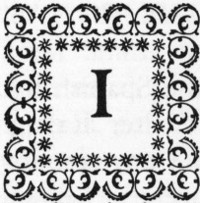
THE
BLACKSMITH
in Eighteenth-Century
WILLIAMSBURG
An Account of his Life & Times and of his Craft
Williamsburg Craft Series
WILLIAMSBURG
Published by Colonial Williamsburg
MCMLXXVIII
The Blacksmith
in Eighteenth-Century Williamsburg

“Iron seemeth a simple metal, but in its nature aremany mysteries,” wrote Joseph Glanvill, a seventeenth-centuryEnglish churchman. To the contrary,Henry Wadsworth Longfellow, two centurieslater, found nothing mysterious about theworker in iron. His brawny blacksmith (long hair and all) embodiedevery simple virtue: he owed money to no man, prayedin church on Sundays, and earned an honest living by the sweatof his honest brow.
Longfellow may have realized that he was penning a swansong for the village blacksmith, whose forge and anvil could notlast far into the factory age. Most probably, however, the poetdid not think of himself as reducing to the level of small-townbanality the lusty craftsman whose precursors forged thunderboltsfor the gods.
To primitive peoples, it seems, there has always been somethingsupernatural about the smith. He tamed fire to his will.He turned the ores of earth into magic and invincible weapons,or into prosaically peaceful tools. He himself became a god:Osiris of Egypt, Hephaestus to the ancient Greeks, Vulcan ofRoman theology, Odin in Norse myth. Or he turned into a wholerace of demigods—giant Cyclops or dwarf Nibelungs—havingmystical skills in metalwork.
SEEKERS FOR GOLD AND IRON
Down through all recorded civilizations man has valued goldas the most precious of metals. Yet in every civilization since2man learned to smelt and forge it, iron has in fact been the metalmost valuable to him.
The paradox is more apparent than real. Iron is a commonmetal, and (with steel) can be put to an almost unlimited varietyof uses—including the working of other metals. Its real valueto man is utilitarian, although it may be employed for decorativeand even monetary purposes. Gold, on the other hand, althoughof somewhat limited usefulness, is comparatively rare and is valuedmore for that than for its durable beauty.
It was, in part, the hope of finding gold—as the Spanish hadfound it in Mexico and Peru—that moved Sir Walter Raleighto send colonizing ventures to North America. But any resourcethat might bring wealth to the gentlemen adventurers in Londonand to England itself was not to be overlooked. ThomasHariot, one of those who reached Roanoke Island with Raleigh’sinitial colonists in 1585, reported that:
In two places of the countrey specially, one about fourescore,& the other six score miles from the fort or place where we dwelt,we found nere the water side the ground to be rocky, which bythe triall of a Minerall man was found to hold iron richly. It isfound in many places of the country els.